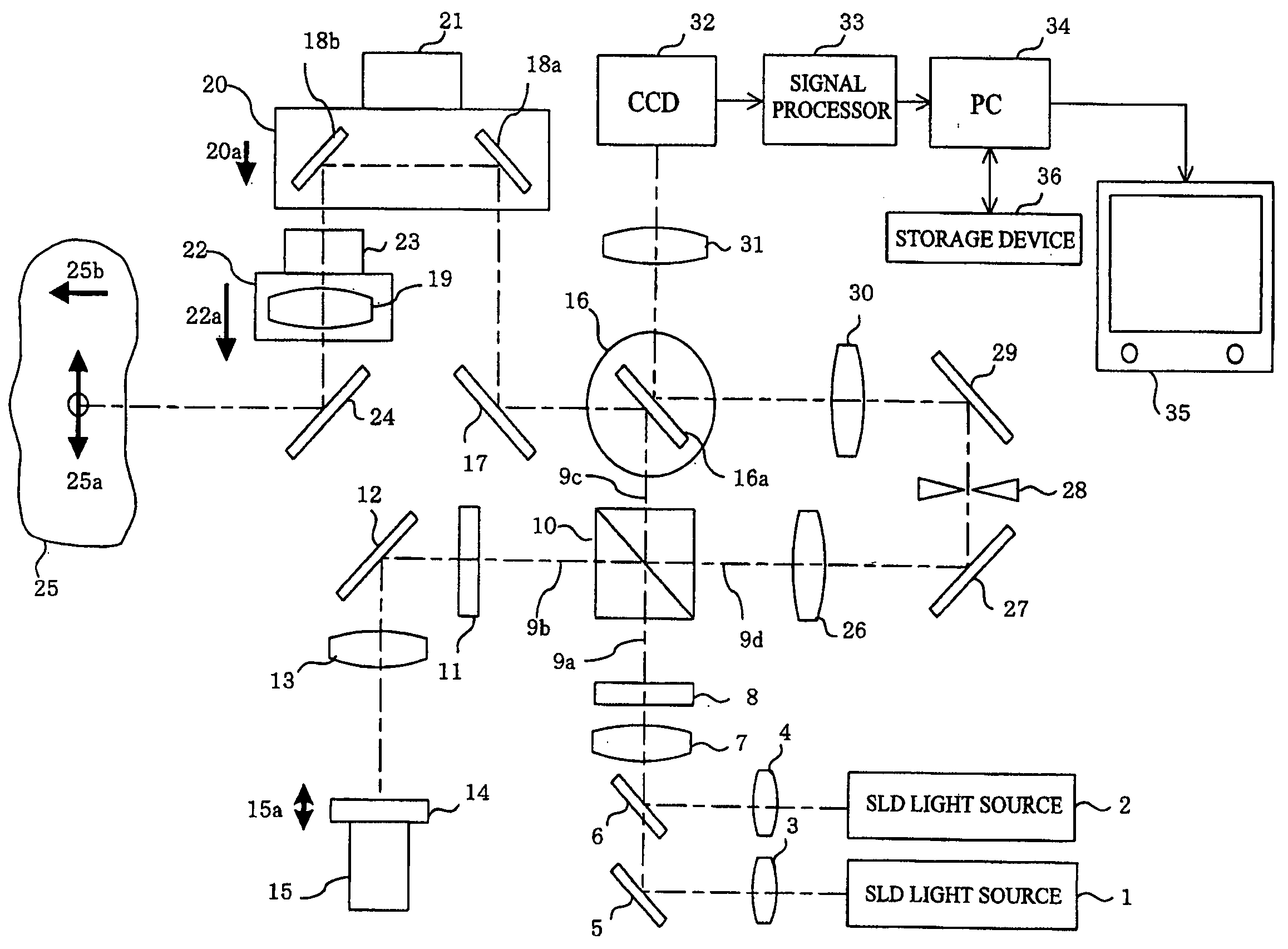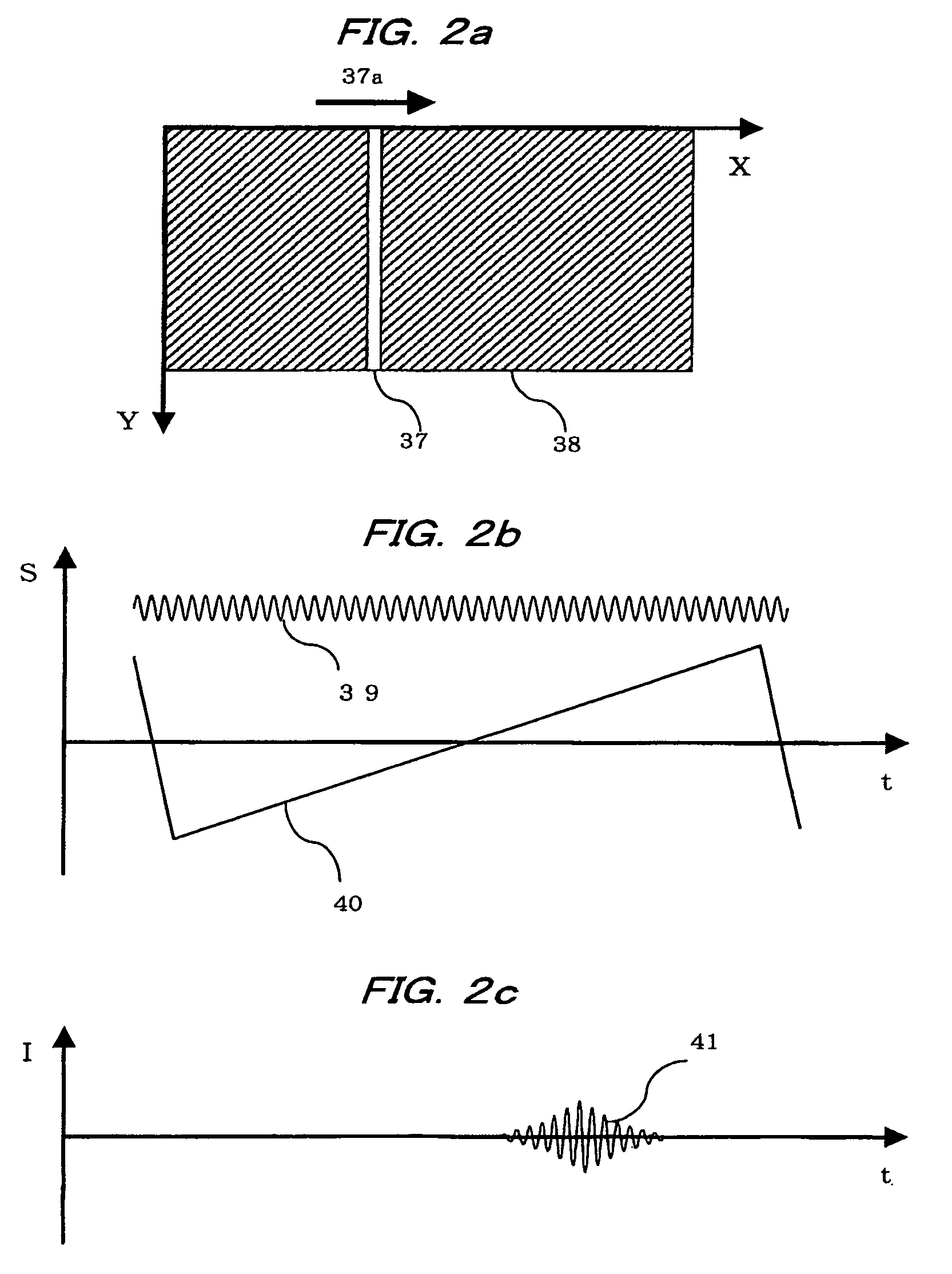Optical coherence tomography apparatus
a coherence tomography and optical coherence technology, applied in the field of optical coherence tomography apparatus, can solve the problems of difficult to obtain the tomographic image of the object at high speed, inability to optimally maintain the focus of the irradiation light directed on the object to be observed, and difficulty in spotting the object, etc., to achieve simplified scanning optical system, high resolution, and facilitate electronic control
- Summary
- Abstract
- Description
- Claims
- Application Information
AI Technical Summary
Benefits of technology
Problems solved by technology
Method used
Image
Examples
Embodiment Construction
[0042]The present invention will now be described in detail with reference to the embodiments shown in the attached drawings.
[0043]FIG. 1 shows an embodiment of an optical coherence tomography apparatus according to the invention that includes light sources 1, 2 respectively comprised of a super luminescent diode (SLD) for emitting partially coherent light having a low-coherence property (little coherence) needed for viewing tomographic images. The light sources 1, 2 generate infrared (invisible) light in different bands having central wavelengths of, for example, 830 nm and 950 nm, respectively. Light beams from the light sources 1, 2 are collimated via lenses 3, 4, and brought onto the same optical axis via a mirror 5 and a dichroic mirror 6.
[0044]It is possible for the light sources 1 and 2 to be combined as a single wide-band light source that generate two wavelength bands. Alternatively, the wavelength bands of the light sources 1, 2 may be used separately as necessary. A singl...
PUM
 Login to View More
Login to View More Abstract
Description
Claims
Application Information
 Login to View More
Login to View More - R&D
- Intellectual Property
- Life Sciences
- Materials
- Tech Scout
- Unparalleled Data Quality
- Higher Quality Content
- 60% Fewer Hallucinations
Browse by: Latest US Patents, China's latest patents, Technical Efficacy Thesaurus, Application Domain, Technology Topic, Popular Technical Reports.
© 2025 PatSnap. All rights reserved.Legal|Privacy policy|Modern Slavery Act Transparency Statement|Sitemap|About US| Contact US: help@patsnap.com



